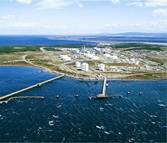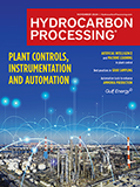Global methanol market poised for rapid expansion, driven by China demand
3/11/2013 12:00:00 AM
 These rapid demand increases are significant, particularly when the numbers are compared to the economic downturn of 2008 to 2009, when the increase in annual demand slowed to just 4%.
These rapid demand increases are significant, particularly when the numbers are compared to the economic downturn of 2008 to 2009, when the increase in annual demand slowed to just 4%. This demand growth is being led by growth in China across all derivatives, as well as fuels applications in China and the rest of the world.
“Methanol is a key option for monetizing gas or coal,” said Mike Nash, IHS global director of syngas chemicals. “An abundant supply of low-cost North American shale gas is driving methanol capacity additions in the US.
"The shale gas revolution is a major game-changer; mothballed methanol units have started back up -- and one Methanex unit has been relocated from Chile to Louisiana with considerations of moving another unit," he added. "Coal supplies in China are also driving projects there, as well, particularly as it relates to using cheap methanol supplies derived from coal to produce olefins.”
Geographically, China remains the growth center for methanol demand, with an average annual growth of slightly more than 12%, while the rest of the world is growing at just below 3%. China methanol consumption will triple from 31 million tons in 2012 to 97 million tons in 2022, according to the study.
Traditional uses for methanol include derivatives such as formaldehyde, MTBE, a fuel octane enhancer; acetic acid and methyl methacrylate, a plastic additive. With China at the epicenter of global growth, fuels applications are one of the primary demand drivers.
Methanol demand in the gasoline pool is expected to increase from nearly 5 million tons in 2012 to just over 11 million tons in 2022. At blend ratios of 15% and slightly increased gasoline consumption trends, methanol consumption could rise to 15 million tons.
“Other possible uses for methanol include being used in gasoline blending, which is a highly political issue, and currently only happening in China," said Nash. "I’m not sure if it can happen in the US due to the powerful ethanol lobby that exists, but if it did occur, the impact on demand would be significant.”
“Another potential use for methanol is biodiesel production involving methanol as a feedstock, which is also a highly political issue, but we anticipate the growth of this use stalling, although there are some mandates for its use, such as in the US, some Southeast Asia countries and Turkey," Nash continued.
"In the European Union and elsewhere, its use seems to have come unstuck, particularly since the usage of crops for biodiesel are seen to compete directly with food production, and non-food crops such as algae are either in their infancy or don’t produce enough yields to be viable.”
Other possible future uses for methanol noted in the IHS report could include methanol as dimethyl ether (DME) on ships as bunker fuel in certain close-to-shore zones in Europe, when new low-sulphur rules go into effect, and insufficient supplies of low-sulphur marine diesel/fuel oil to satisfy demand. A trial is being conducted now to test feasibility.
China has become by far the largest methanol producing country in the world, representing 54% of world capacity and 43% (26.5 million tons) of world methanol production in 2012.
The global methanol industry is now reaching the end of a significant wave of capacity expansions. Since 2007, capacity has been added at the rate of 14.3%/year, according to IHS, in an industry where demand had been growing at around 8.6%/year.
However, Chinese capacity utilization is only around 50%, since China adjusts operating rates to “balance” world supply and demand. China is nearing the end of a major capacity expansion wave, with only an additional 7.5 million tons of new capacity for the merchant market expected to come on stream through 2022. This leaves well over 40 million tons of new China methanol capacity integrated to MTO/MTP coming online during the forecast period.
The vast majority has been added in China driven by demand growth, particularly to supply emerging applications. Large methanol-to-olefins (MTO)/methanol-to-propylene (MTP) and or DME- integrated complexes have been and will continue to be built, consuming massive quantities of methanol dedicated to these downstream derivatives.
According to the IHS report, even with China’s massive buildup of methanol capacity, demand growth in China is projected to be so rapid (more than 12%/year) that, by 2022, if imports were unavailable, the domestic capacity would need to operate at almost 100% utilization to meet domestic demand.
By 2022, without additional Chinese capacity, IHS estimates that imports will not only be an economic-driven opportunistic option to secure low-cost methanol, it will also be a requirement to meet local demand.
Northeast Asia, Europe and North America were the world’s largest importing regions of methanol in the world in 2012, representing more than 80% of total world import figures.
Going forward, Europe’s import levels will increase only moderately, whereas Northeast Asia imports are forecast to triple during the period of 2012 to 2022. North America, on the other hand, becomes essentially balanced by 2022, as large new regional capacity is built to take advantage of plentiful, cheap shale gas and substantial regional demand.
Conversely, the Middle East and South America are and remain the two largest exporting regions for the methanol industry, representing approximately 70% of the world’s export supply.
For more details on the study, visit the IHS website.






Comments